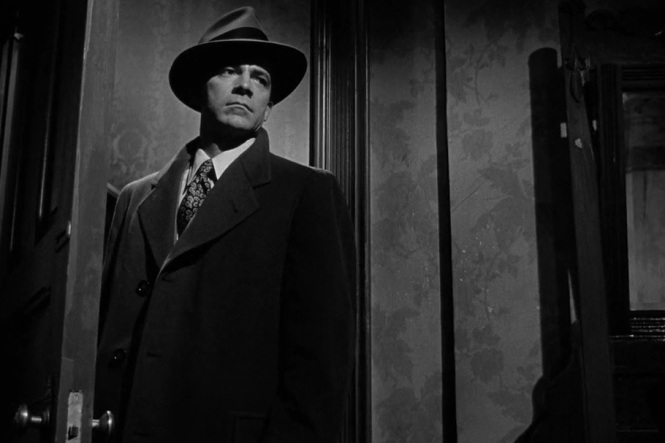Classic Film: Where the Sidewalk Ends
Written by Ian Thomas Malone, Posted in Blog, Movie Reviews, Pop Culture
With all the world’s attention on police corruption, 1950’s Where the Sidewalk Ends presents an intriguing historical perspective on the issue. Dirty cops are older than recorded time itself. As attempts at criminal justice reform stall in Congress, director Otto Preminger’s work helps explain why this particular issue remains so challenging to resolve.
Mark Dixon (Dana Andrews) is a cop who’s been recently demoted due to his frequent use of violence. Dixon’s father was a criminal, leaving him perpetually feeling caught between two worlds. An illicit craps game leads to the death of a rich Texas gambler. Dixon’s efforts to solve the murder lead him to a confrontation with Ken Paine (Craig Stevens), implicated in the killing by gangster Tommy Scalise (Gary Merrill). Dixon accidentally kills Paine, leaving a complex web for the narrative to unwind.
For all the ways that Dixon is a detestable character, Andrews sells him quite well. Dixon’s scenes with Morgan Taylor (Gene Andrews), Paine’s estranged wife, reveal a softer layer underneath his abusive behavior. Ben Hecht’s script and Cyril Mockridge’s jazz-infused score work in tandem to support the overall excellent performances from the principal cast. The whodunit doesn’t pack a wallop, but Preminger never lets his narrative drag across the 95-minute runtime.
The film’s crowning achievement is the way the narrative slowly condemns the bastardization of the rule of law. Andrews almost does too good a job allowing Dixon to embody the role of the protagonist, a character whose motives are easy to understand. Dixon is too flawed a man to be entrusted with the levers of justice, but the system is ripe with cops cut from the exact same cloth. You can’t have justice when the people in power bend the rules to serve their own sense of right and wrong.
Preminger’s slick noir gem presents a damning indictment of the criminal justice system’s perpetual rot and the kinds of cops who take the law into their own hands. There are no heroes in Where the Sidewalk Ends, but the film is chock full of compelling characters. Few films come across as so endearing in the absence of any specific person to root for, but Andrews and Tierney make the most of their top billing.
You don’t leave the feature with a great sense that the system will improve, but rather an understanding of how things have gotten this bad. While many seventy-year-old crime dramas possess dated narratives that would come across as unrealistic in the modern era, Where the Sidewalk Ends still remains as timely as ever. Dixon is not fit to be a police officer, something his squad knew all too well. As long as people like him remain in power, things will never change.















